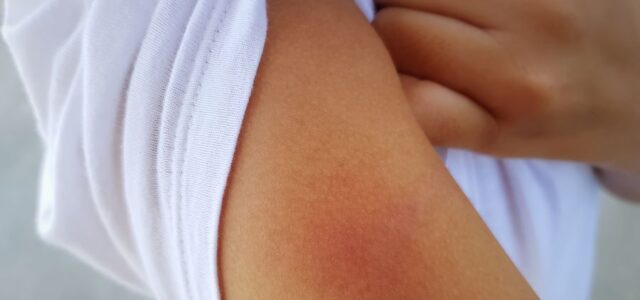Call for your appointment today 914-666-4665 | Mt. Kisco, New York

In the study “The Spectrum of Erythema Migrans in Early Lyme Disease: Can We Improve Its Recognition?,” investigators examined images of lesions from 69 participants, including 43 men and 26 women, suspected to have early Lyme disease. The majority of participants (83%) presented with a single lesion.¹
The images were retrospectively evaluated by a dermatologist and a family practitioner with expertise in early Lyme disease.
The authors found that 35 lesions (51%) were erythema migrans (EM); 23 lesions (30%) were considered to be possible early EM or tick bite reactions, and 11 (16%) were thought not to be EM, but rather other diagnoses, including ringworm, allergic contact dermatitis, and mosquito bites.
“Only two lesions (6%) were observed with a classic bull’s eye or ring-within-a-ring pattern.”
EM rashes were reported most frequently to appear on the abdomen, thigh, back and hip.
Participants with an EM rash reported the following symptoms: chills, fever, night sweats, headache, fatigue, body aches, nausea and neuralgia.
Most EM lesions appeared:
- Uniform (51%)
- Pink (74%)
- With an oval shape (63%)
- Well-defined borders (92%)
What did early EM or tick bite reactions look like? They “were typically <5 cm in size (74%), red (52%), round lesions (61%), with a punctum present (100%),” according to the authors.
Lesions that were not EM rashes appeared: pink or red (64%), round (55%), or uniform (45%) lesions, but also had raised (25%) or irregular borders (33%).
“EM commonly occurs in forms that are not the classic bull’s eye.”
“Only 14 (20%) participants overall had positive laboratory evidence for LD; these included 13 (37%) of the participants with EM-classified lesions,” the authors wrote.
The authors suggest that “education should deemphasize the bull’s eye form and stress the wide variability in EM instead and the fact that many of them present as a uniform, homogeneous lesion.”
The authors conclude:
- “Patients often present with lesions that may represent the very early stage of EM or tick bite reactions, and most patients will test negative on currently available laboratory tests…”
- “Clinicians may not be aware of all existing variations, such that some LD patients with EM may not be immediately recognized and promptly diagnosed and treated. Hence, further improvements in terms of clinician awareness and recognition of EM are needed.”
Related Articles:
What does a Lyme disease rash look like?
Lyme disease rash puzzles doctors, leads to misdiagnoses
Erythema migrans rash doesn’t always have Bull’s eye appearance
References:
- Schotthoefer A M, Green C B, Dempsey G, et al. (October 25, 2022) The Spectrum of Erythema Migrans in Early Lyme Disease: Can We Improve Its Recognition? Cureus 14(10): e30673. doi:10.7759/cureus.30673




My rash was a huge hour glass shape on my whole torso region. My primary thought it was a fungus and was going to give me a fungicide. I thought better of it and told him it was Lyme related and to test me for Lyme which was confirmed.
I am your doctor was willing to work with you.
Can lyme or any of it’s co-infections cause ones A1c to climb to Diabetic numbers?
There are so many causes for HA1C. I have HA1C rise in some Lyme disease patients who have cut out activity, gained weight, and were not able to follow a diet.